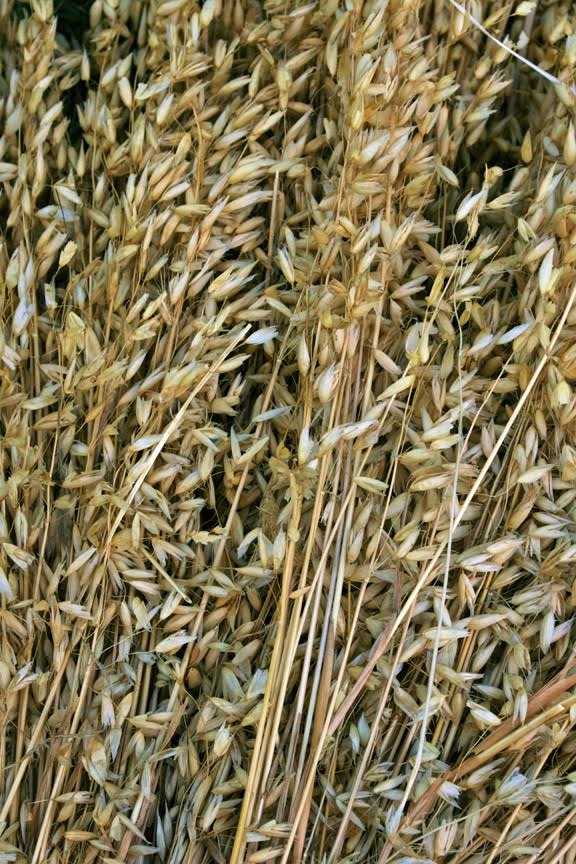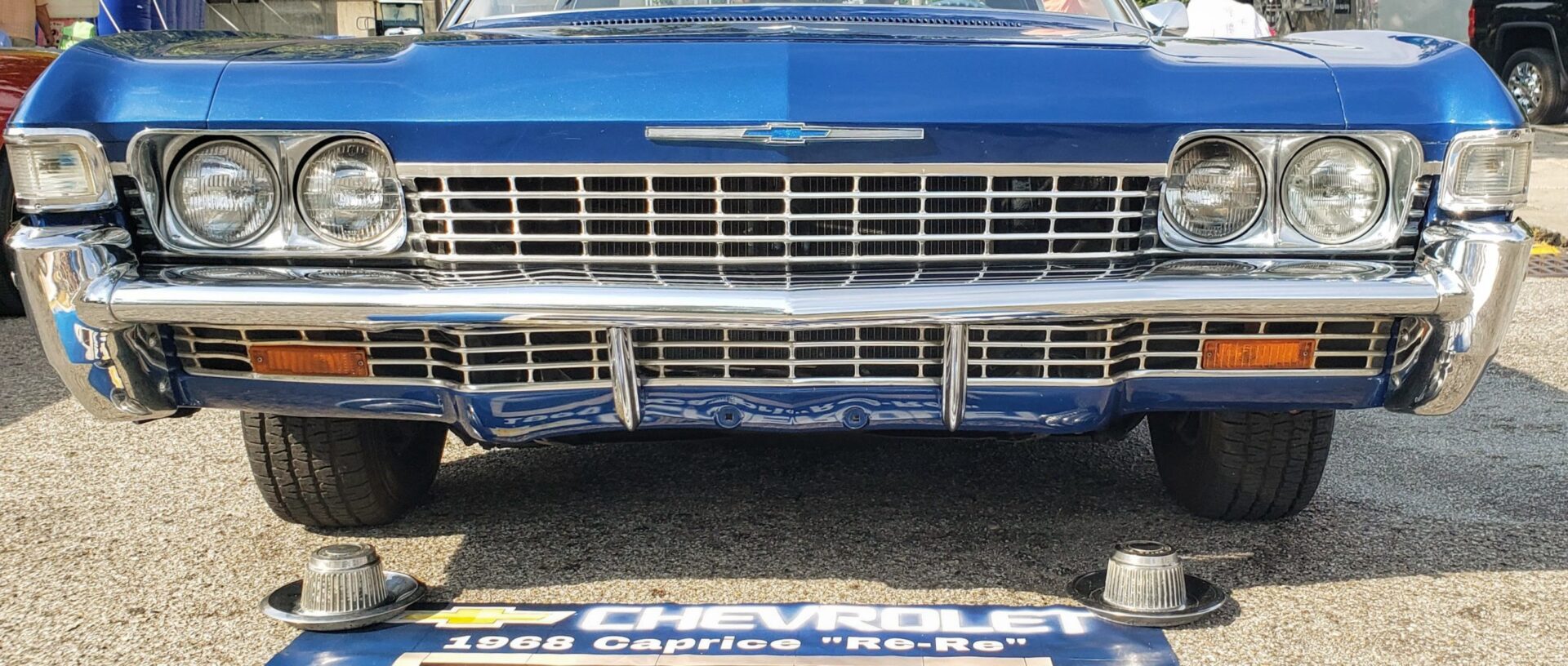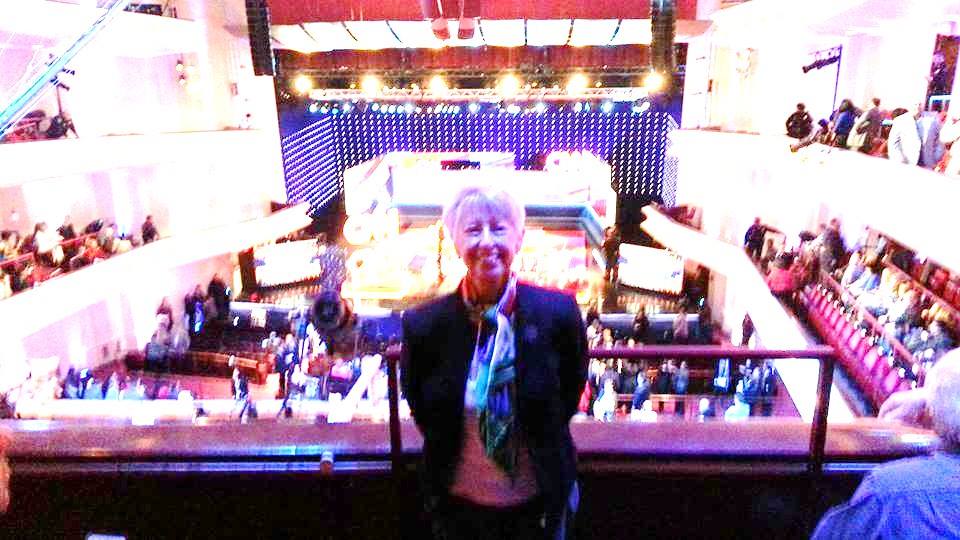By Dylan Doherty
In the spring of 2015, Melissa Ruboyianes of Flint got a life-changing e-mail.
She learned that Dennis and Sharon Hanson, owners of Black Beard’s wheat farm in Turtle Lake, North Dakota, were retiring after 35 years in the wheat business.
Ruboyianes, 58, a craftswoman in the ancient art of wheat weaving and co-owner for the past 30 years of a Flint-based wheat weaving craft company, despaired. Black Beard wheat was a prized medium for wheat weavers.

Black-beard wheat
Her initial plan was simply to buy as much of the wheat as she could and figure out what to do from there. She planned on getting 10 boxes of wheat, a box she said would last a weaver a whole year.
But after a few conversations with Sharon Hanson during spring and summer of 2016, she ended up with their entire stock of wheat, along with their processing and farming equipment, 75 bushels of seeds, and the responsibility of shipping the wheat to weavers across the country.
The Hanson family had been growing wheat in Turtle Lake since the 19th century. Dennis Hanson’s great-grandparents homesteaded in the area in 1884 and Sharon Hanson’s grandparents arrived at Turtle Lake in 1904. Instead of continuing the tradition of wheat farming within their family, they are passing it on to Ruboyianes. They “felt Melissa would be a good fit,” Sharon Hanson said.
A centuries-old tradition
Perhaps that is because they understood Ruboyianes wanted to continue a tradition of wheat weaving which goes back centuries.
In this country, Turkey Red wheat, a variety found in Kansas, was brought to the United States by the Mennonites fleeing Russian persecution in the 1870s, Ruboyianes explained. Most wheat traditions originated with the farmers who planted it. A wheat weaving would be a talisman for good luck. Ruboyianes explains that the corn spirit lived in the wheat, “corn” at this time used to refer to all grains.
As the wheat was harvested, the corn spirit, it was believed, would move to the last wheat, which was used for weaving. The weavings came to have stereotypical patterns: the Mare, the Neck, the Welsh Border Fan. The latter was given to the newest farmer, a bad luck omen (“The slow poke award,” said Ruboyianes.). The young man would try to bring the Welsh Border Fan into the house while the other farmers tried to dose him with water.
Wheat was cheap and readily available and wheat weaving was popular during the straw trade of that era, especially hat making. Platting schools were built, set up by local churches. Three- and four-year-old children would braid strips of straw and end up at the local market for the straw trade, which shipped out all over Europe. Farmers’ wives could sometimes make more money wheat weaving than their husbands.
Bringing a wheat business to Flint
A century and a half later, Ruboyianes found herself about to do whatever was needed to keep the tradition going. She negotiated a price with the Hansons, but said she still considers the wheat and equipment a gift. She purchased a semi-van from a friend in Saginaw and left the first week of July to go to North Dakota.
Once she arrived in Turtle Lake, she realized that one semi-van would not be enough and bought another. Along with the wheat and seeds, she received a two-row binder, which is a “really big snowblower” which harvests the wheat and ties it into bundles.

The wheat truck arrives back in Flint.
She had nothing prepared for storage when she arrived back in Flint with two semi-vans full of wheat and equipment. She started with a 10-foot by 20-foot tent in the backyard of her one-acre property in Flushing, but a storm blew the tent over.
She then tried to move the wheat to her basement, but mice got a hold of it. Her current location is a tent in the driveway and her garage, the roof of which was reroofed by her nephew.
In all these locations, she worked on processing the wheat to ship out to customers. She removed the leaves by pulling the wheat through a set of nails lodged in a wooden board, usually with her dog at her feet, covered in straw.
There are difficulties. She has trouble carrying the bundles. She has currently run out of boxes to ship the wheat. The boxes she needs would cost ten dollars, but that “ten dollars is going in my gas tank,” she said. Still, she thinks of her main customers, the 130-odd members of the National Association of Wheat Weavers (NAWW). “All these people are hopeful that they can still get this wheat,” she said.
Next step, a building to keep out turkeys

Ruboyianes with her wheat-saving crew.
The next step is getting a building. Ruboyianes’s property, although suitable for the time being, is neither weather nor critter proof. Turkeys and every other bird in town seems as interested in the wheat as she is, she said.
She has looked into North Saginaw’s Small Business Development Center, the Land Bank, and local buildings in town to provide a location. “It’s very difficult without the proper building and vehicle,” she said.
Nonetheless, Ruboyianes revels in bringing a new business to Michigan. “This can provide a lot of jobs,” Ruboyianes said. She emphasizes that a person doesn’t need a four-year degree to contribute to this business. She has already recruited two of her sisters who, like her, are also recent Mott students.
“Wheat Street” is the name of her business dedicated to selling the wheat to wheat weavers. Ruboyianes started the business with her mother 30 years ago to sell wheat weavings at craft fairs around Michigan, and the business is now well established, she said.
Hope for getting wheat seeds in the ground
She currently has enough wheat to process and sell for the next couple of years, but is already looking forward to growing the wheat in Flint. Along with the wheat and equipment she brought with her from Turtle Lake, she also got 75 bushels of seed, just shy of 700 gallons. She’s talked with a few farmers about getting seeds in the ground and also contacted the Michigan State University Extension Agriculture division.

Oats also are part of the tradition.
She hoped to get seeds in the ground last spring, but was unable. It didn’t help that she lost four family members in the first five months of 2017. Still, she has been talking to retired farmers about getting the project started. They had more experience growing wheat for food rather than art. She would like to plant five acres somewhere between Flint and Saginaw and “keep it in Genesee County.” Her current goal is to plant the wheat in Spring 2018.
Ruboyianes explained that harvesting the wheat is the most difficult part. The weather in Flint is similar enough to Turtle Lake to grow the wheat. The main trouble is the extra rain Flint receives, which can discolor the wheat. The sun is what turns the wheat beard, or hairs or awns, black.
Wheat farmers wanted
Ruboyianes has other concerns. “I’m not a farmer,” Ruboyianes said. She has been in contact with retired farmers in Genesee County to help with her project. She’s been looking for farmers with land who are willing to grow the seeds on their land. She said she is offering twice as much as the going rate.
She said she needs people versed in logistics. The farm will have to deal with spraying pesticides, disease, and rust.
Meanwhile, she has homework to attend to. “It’s going to take a pretty good dance and a team of people interested in art, agriculture, our community, and developing urban areas.”
Until then she still has concerns about the processing. She is focused on fumigation and pest control, especially concerning bull weevils. She has already contacted a fumigator for that work, which needs to be done a few times a year.
From 8th grade education to Mott Community College

Ruboyianes with a finished wheat weaving at the recent Lady Fest (photo by Dylan Doherty)
A few years ago Ruboyianes returned to school to attend Mott Community College. This has afforded her the opportunities to get wheat weaving into a college setting, which “advances our cause by leaps and bounds,” she said. She has been able to get her work shown in the university gallery.
But being a full-time student committed to her education also made the wheat business problematic. “I don’t have time to write a business plan or grant proposal,” she said. Until then, she only had an 8th grade education. She got married twice, had a baby, spent 10 years as an Army reservist, and went into real estate, but even then wheat weaving was always in her life. She showed a house once featuring her artwork.
But her school work has also provided more opportunities to spread the word about wheat weaving, including a state exhibition at Wayne State University for community colleges. She also has connections with Buckham Gallery and recently showed her artwork at the LadyFest art exhibition. She also has shows in Dearborn, Plymouth Art in the Park, and the Renaissance Festival.
“I have faith that things will happen”
Ruboyianes said she hopes to continue the wheat weaving traditions by passing the Flint operation to someone else. She has also continued the tradition by teaching her mother how to weave.
“I have faith that things will happen,” said Ruboyianes. “I have a lot of perseverance. There’s a lot of people here with dreams who want to see their community move forward. Let’s get past being Flint the city of water. We have too much good here to come out and share with the world.”
EVM staff writer Dylan Doherty can be reached at dohertydylanc@gmail.com.







You must be logged in to post a comment.